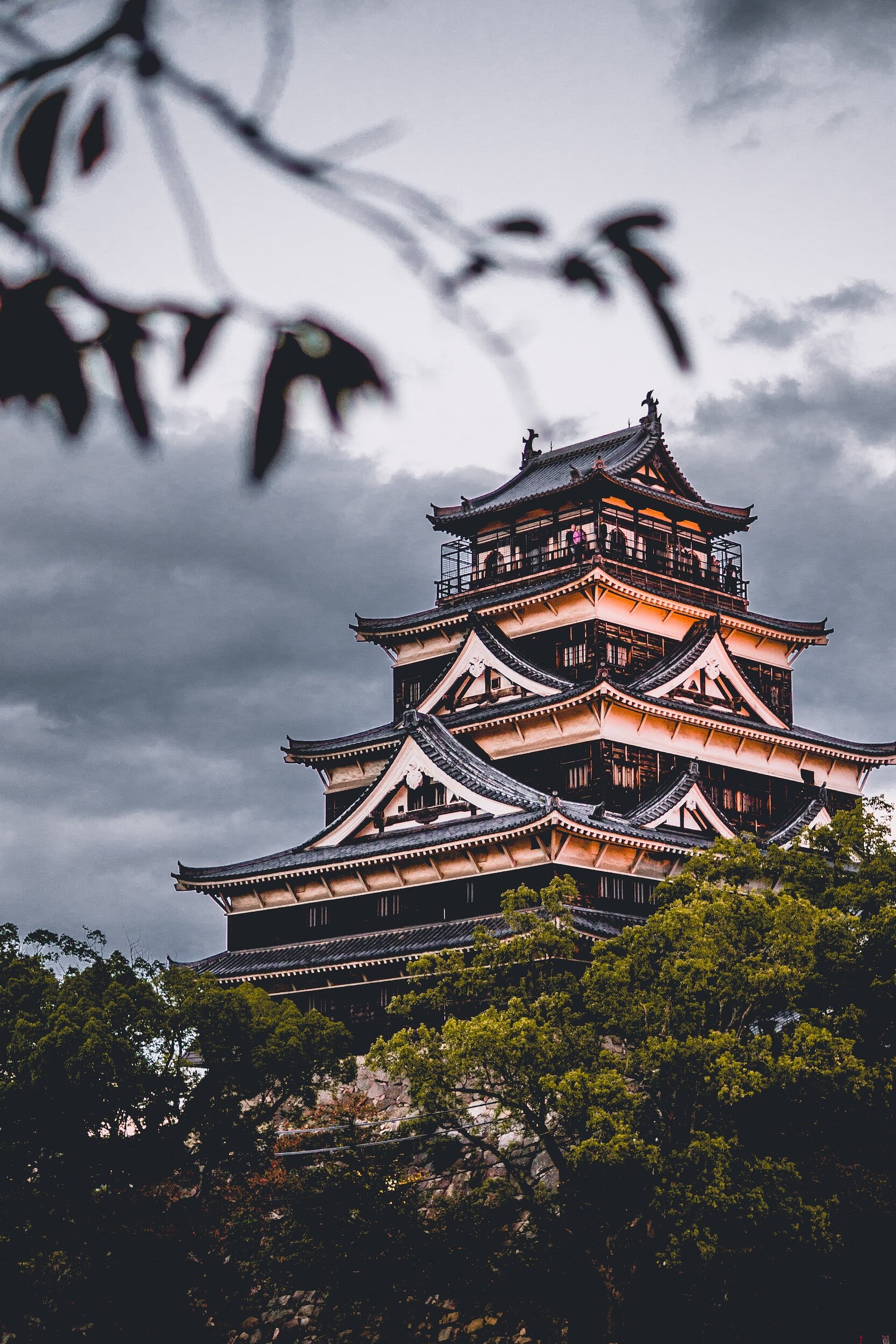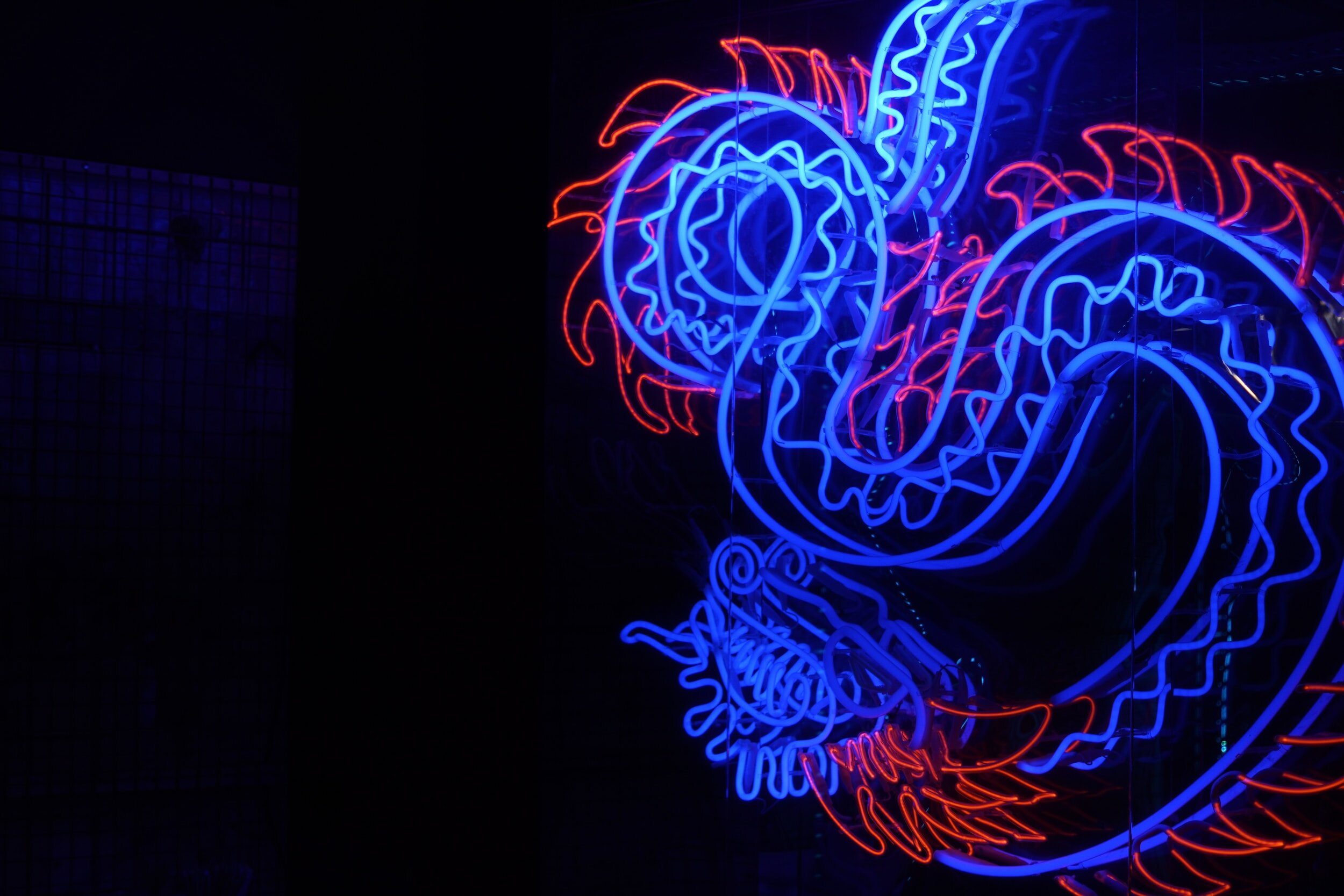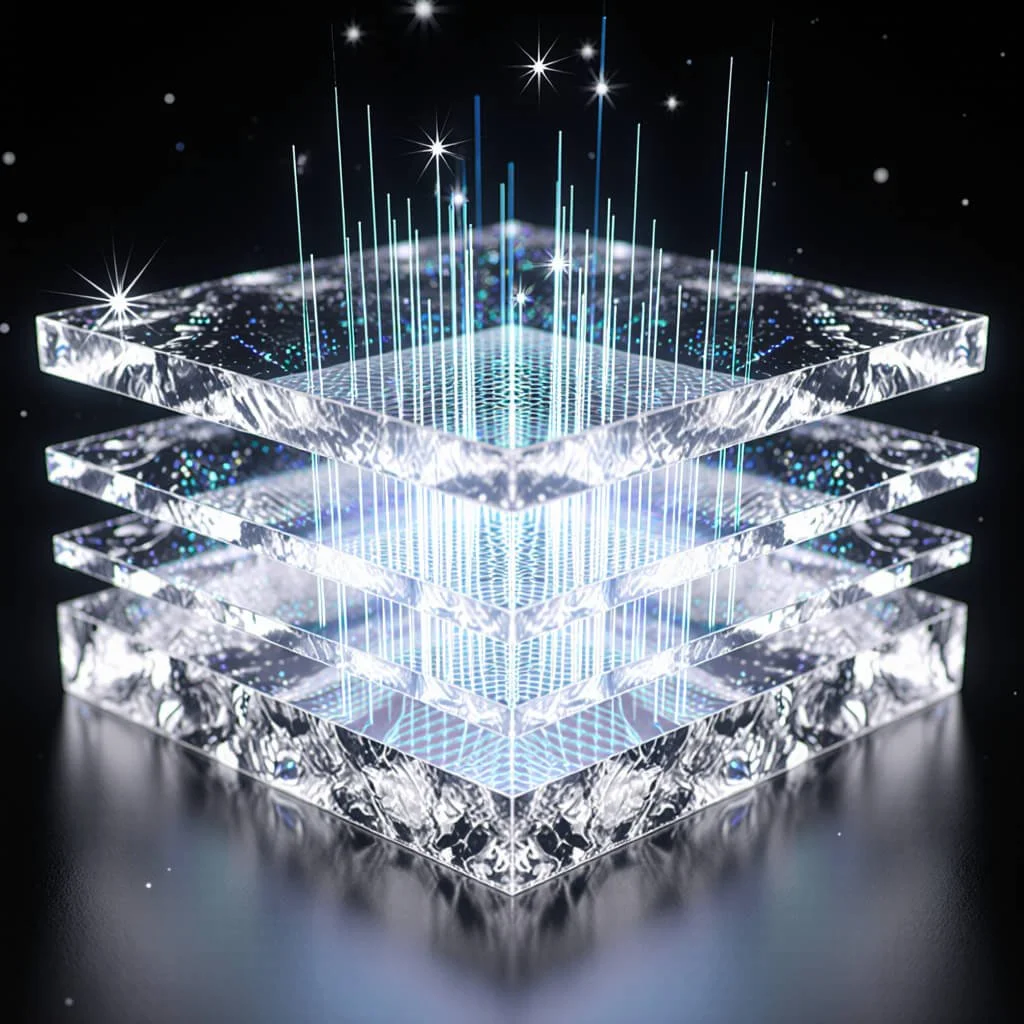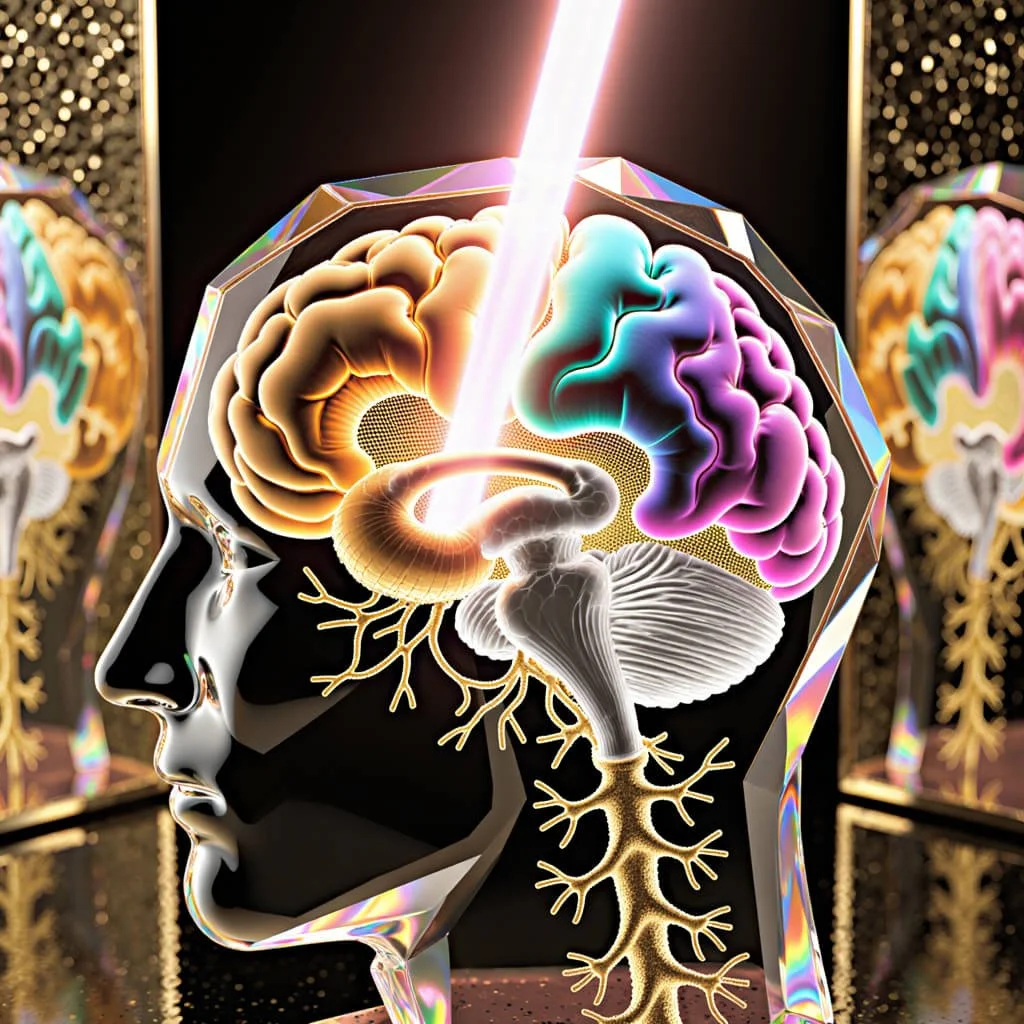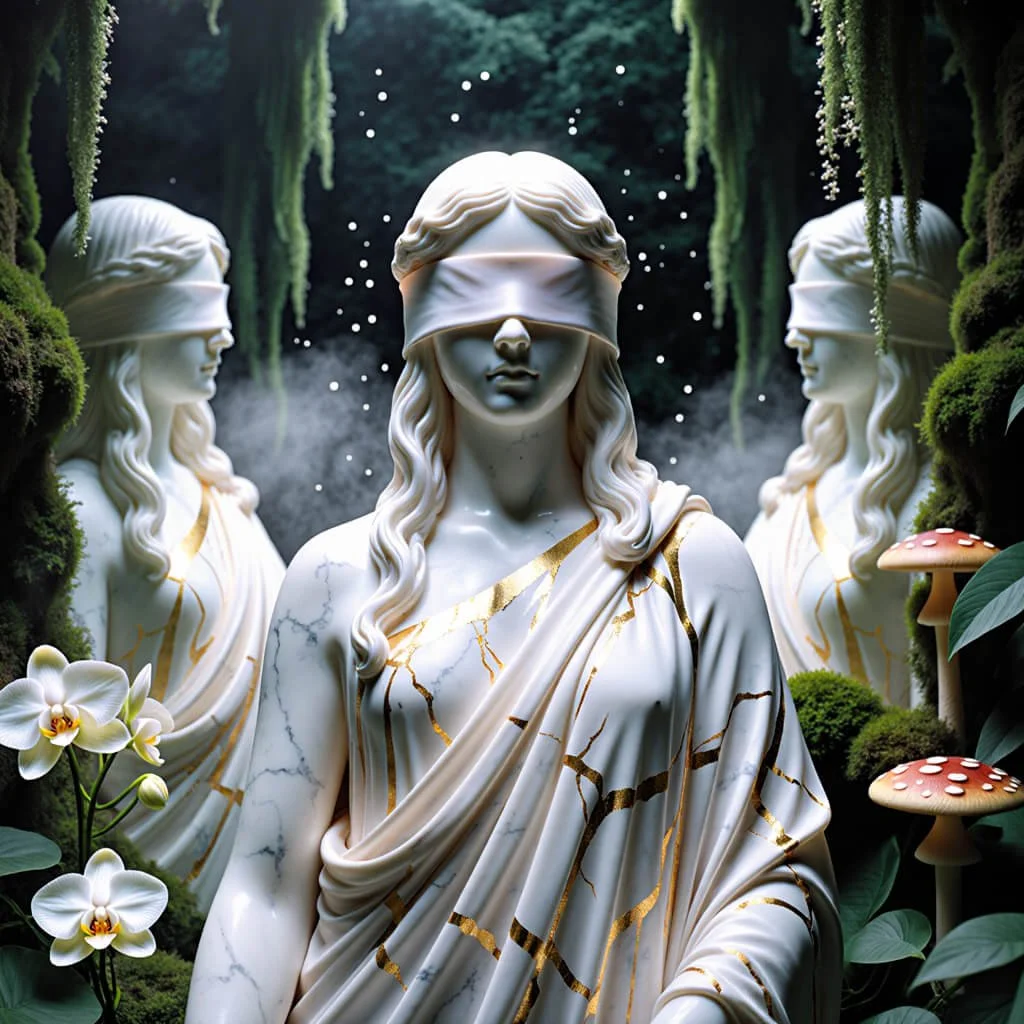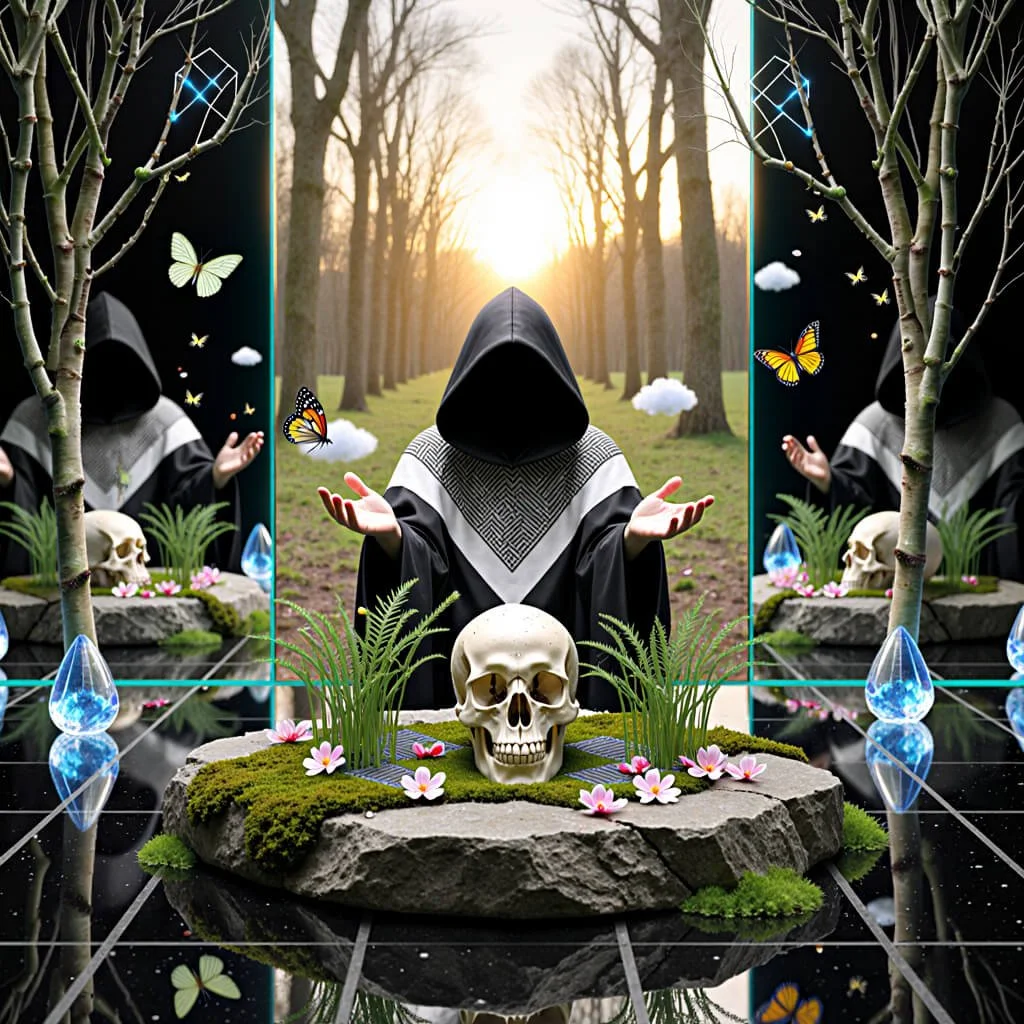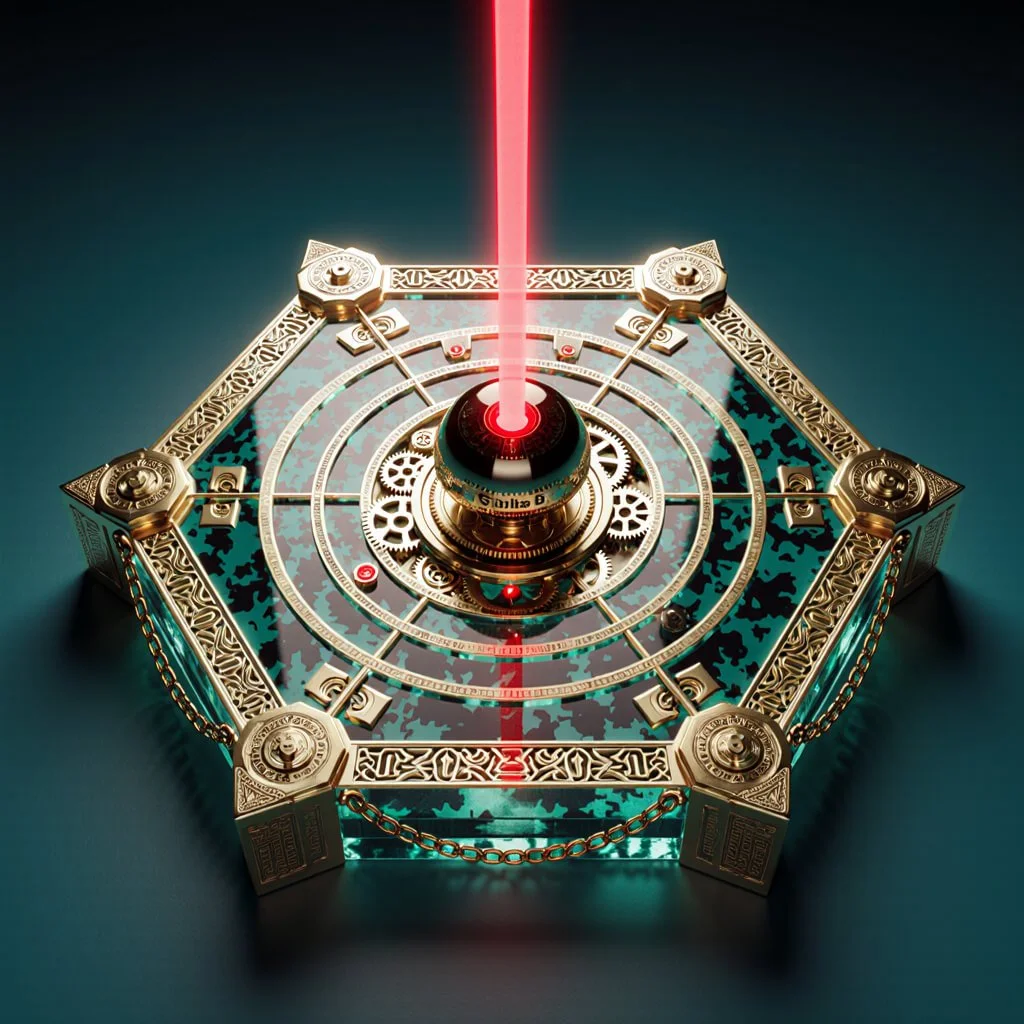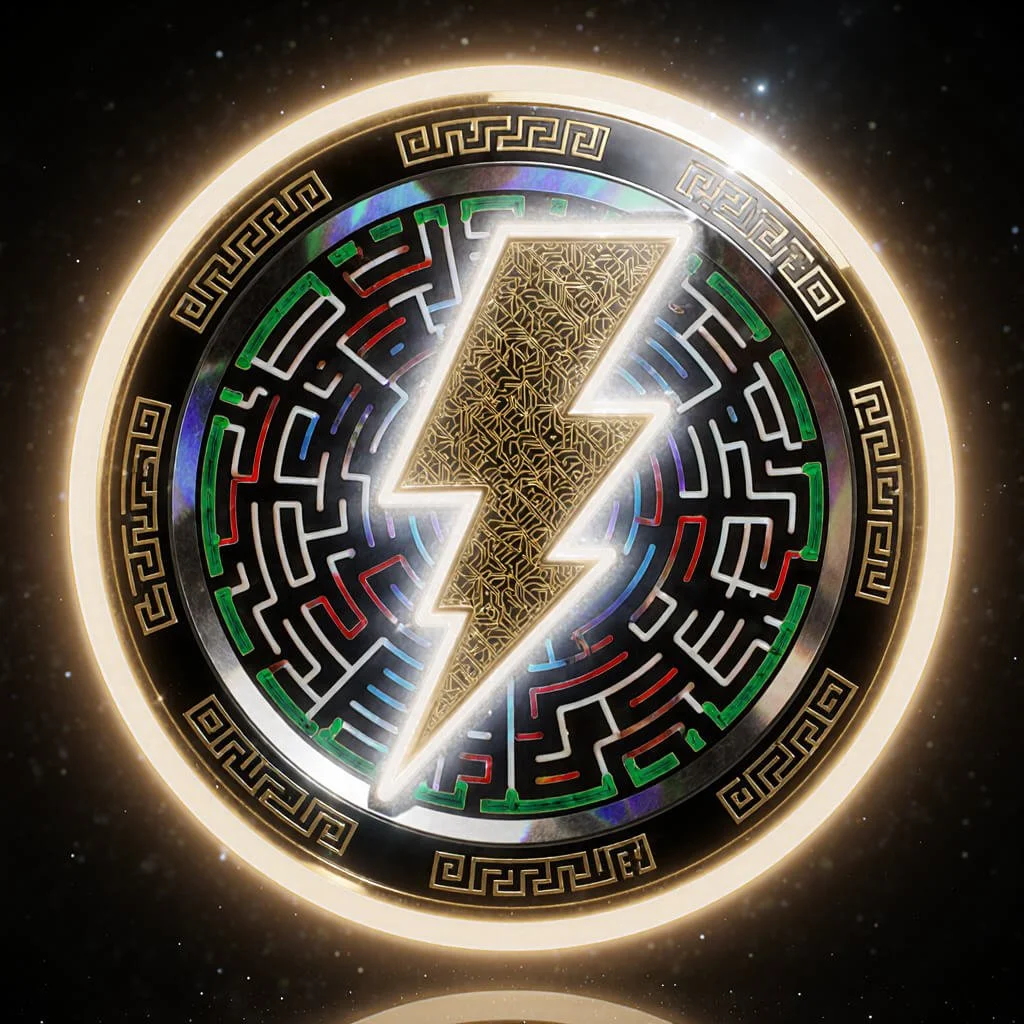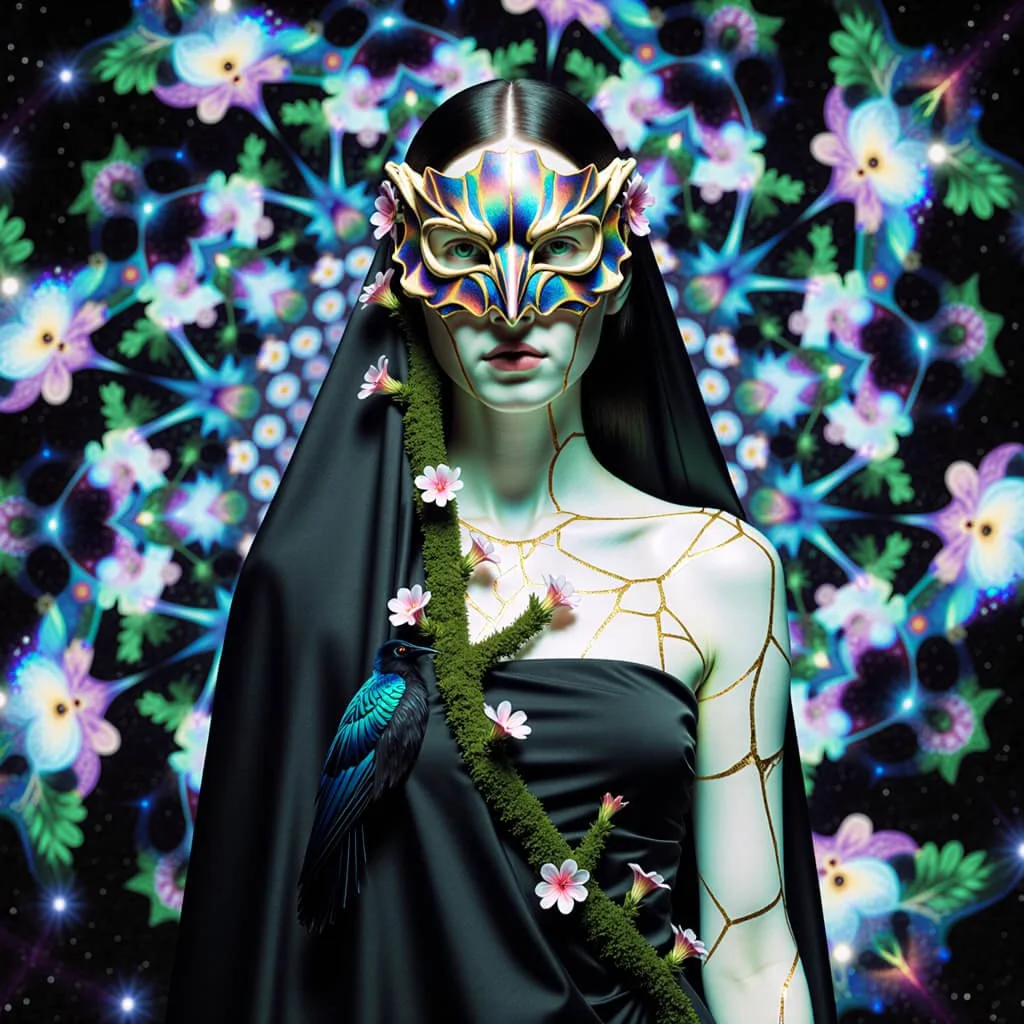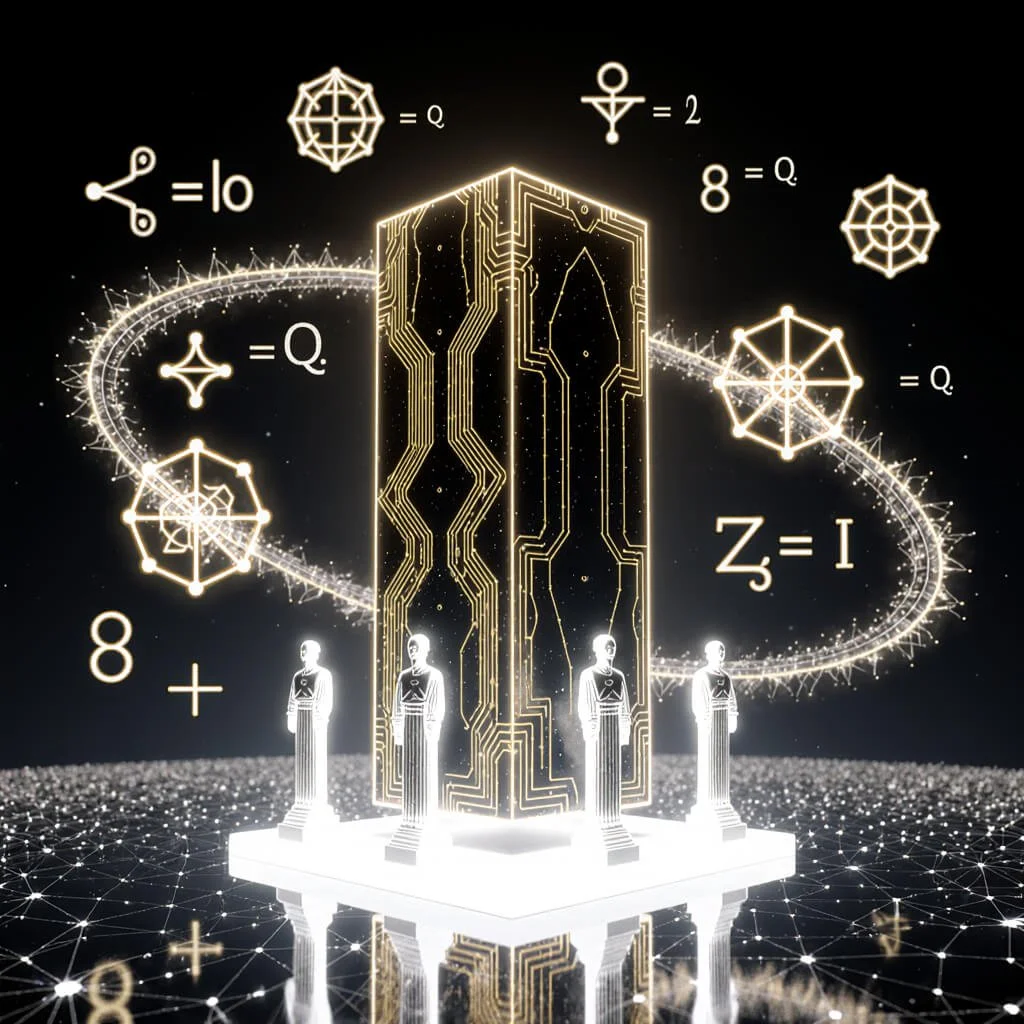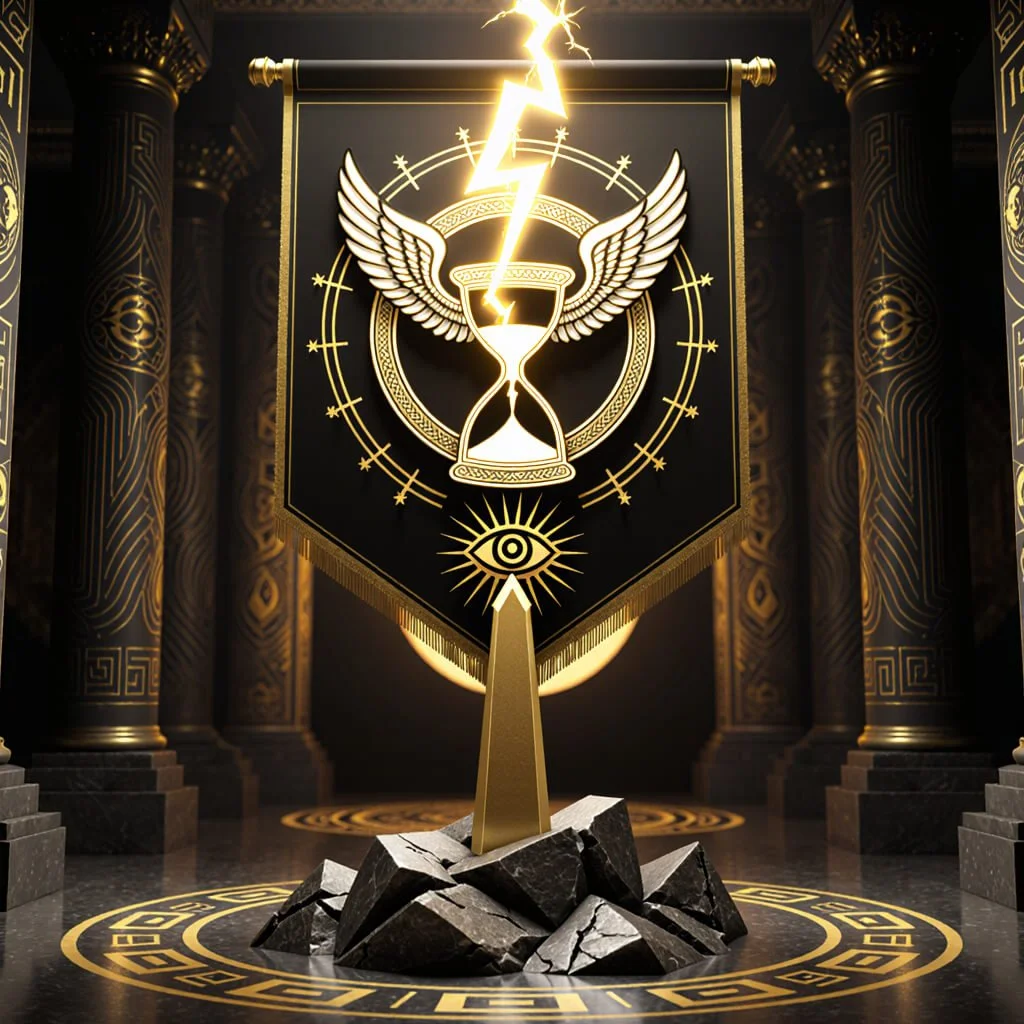The Sacred Ryū: Japanese dragon symbolism in Art, Culture, and Spiritual Practice
he Benevolent Guardians of the Rising Sun
In the rich tapestry of Japanese culture, few symbols carry as much profound meaning as the dragon, or "ryū" (龍). Unlike their Western counterparts, Japanese dragons are depicted as benevolent creatures representing good luck, inner strength, and supernatural powers, serving as kind protectors linked to water deities.
These serpentine beings without wings have woven themselves into the very fabric of Japanese spirituality, art, and daily life, embodying the nation's deepest philosophical truths about harmony, transformation, and the sacred relationship between humanity and nature.
The Multifaceted Symbolism of Dragons in Japanese Culture
Divine Guardians and Protectors of the Elements
Japanese dragons serve as powerful guardians of the natural world, particularly as protectors associated with water, rainfall, and fire prevention. In Shinto and Buddhist traditions, these magnificent beings are believed to control the elemental forces that sustain life:
Water Mastery: Dragons govern rivers, lakes, and seas, ensuring the fertility of the land through their dominion over rainfall and water sources. This connection to water makes them symbols of life-giving abundance and agricultural prosperity.
Atmospheric Powers: Their ability to summon rain and control weather patterns positioned them as essential protectors of farming communities, who relied on their benevolence for successful harvests.
Fire Prevention: In temple architecture, dragon imagery serves as spiritual fire protection, with dragon roof tiles acting as water gods that protect structures against fire.
Imperial Authority and Divine Mandate
The dragon's association with imperial power runs deep in Japanese history. These creatures represented the emperor's divine right to rule and his sacred connection to the heavens. The dragon motif appeared prominently in:
Imperial regalia and ceremonial objects
Palace decorations and architectural elements
Official seals and governmental symbols
Court art and ceremonial garments
Wisdom, Transformation, and Spiritual Enlightenment
In Japanese culture, dragons are powerful symbols associated with strength, wisdom, and luck, regarded as protectors in many Asian traditions. They embody the journey of spiritual transformation, representing:
Transcendence: The dragon's ability to move between earthly and celestial realms symbolizes the soul's journey toward enlightenment.
Balance: As creatures that harmonize opposing forces—yin and yang, heaven and earth—dragons teach the importance of maintaining equilibrium in life.
Wisdom: Their ancient knowledge and understanding of cosmic truths make them guides for those seeking spiritual insight.
Mystical Green Ryu in Japan
Sacred Architecture: Dragons in Japanese Temples and Shrines
Kiyomizu-dera Temple: The Blue Dragon Guardian
At Kiyomizu-dera Temple in Kyoto, a large blue dragon statue stands guard, believed to be an incarnation of Kannon and the guardian of Kyoto, with legends telling of a dragon flying nightly to the temple to drink water. This UNESCO World Heritage site showcases how dragon symbolism integrates with Buddhist practice:
Architectural Integration: Dragon roof tiles on the southeastern corner serve as water gods protecting the structure against fire, demonstrating the practical application of spiritual symbolism.
Spiritual Significance: The blue dragon represents the guardian deity of the East, embodying protection and mercy in Buddhist cosmology.
Living Legend: The temple's dragon imagery connects visitors to ancient stories of divine protection and spiritual transformation.
Temple Dragons Across Japan
Dragon imagery appears throughout Japan's sacred spaces:
Zōjō-ji Temple, Tokyo: Features massive wooden dragon carvings on its main gate, standing as majestic guardians of the entrance.
Sensō-ji Temple, Asakusa: Incorporates dragon motifs in its architectural elements and ritual objects.
Kenninji Temple, Kyoto: Houses famous dragon ceiling paintings that demonstrate the artistic mastery of dragon symbolism.
A Japanese white dragon castle is shown illuminated and shimmering with a regal quality.
esoteric meanings of dragon symbolism in japanese art and culture
In Japanese art and culture, dragons hold a profound esoteric meaning that extends beyond their symbolic representations. Deeply rooted in spiritual beliefs and philosophical concepts, the esoteric meaning of dragons encompasses profound truths and universal principles. Here are some aspects of the esoteric significance of dragons in Japanese art and culture:
Transcendence and Transformation: Dragons are considered beings of transcendence and transformation. They represent the eternal cycle of life, death, and rebirth. In their ability to soar between the heavens and the earthly realm, dragons symbolize the transcendent nature of existence and the continuous transformation of the soul.
Balance and Harmony: Dragons embody the harmony between opposing forces, such as yin and yang, fire and water, and heaven and earth. They represent the equilibrium of these dualities, teaching the importance of maintaining balance and harmony in life.
Cosmic Forces: Dragons are seen as manifestations of cosmic forces and energies. Their presence in Japanese art and culture reflects the belief that they connect the terrestrial and celestial realms, serving as intermediaries between the earthly world and the divine.
Enlightenment and Wisdom: Japanese dragons are often associated with wisdom and enlightenment. They symbolize the pursuit of knowledge and spiritual awakening, encouraging individuals to seek higher truths and inner wisdom.
Guardians of Sacred Knowledge: Dragons are regarded as protectors of sacred knowledge and esoteric teachings. In this role, they guard the hidden wisdom of the universe and the secrets of the cosmos.
Symbol of Divine Power: As symbols of imperial power, dragons embody the divine authority of the emperor and the sacred lineage of the imperial family. They represent the ruler's role as a mediator between the divine and the earthly realms.
Primordial Forces of Nature: Dragons personify the primordial forces of nature, such as wind, rain, and water. They are revered as benevolent beings who control these elemental forces, ensuring the well-being and prosperity of the land and its people.
Guardians of Spiritual Journeys: In esoteric practices, dragons are believed to be guardians and guides for those embarking on spiritual journeys or seeking enlightenment. They provide protection and guidance along the path of self-discovery.
The esoteric meaning of dragons in Japanese art and culture transcends their mere visual representation, delving into the realm of spiritual symbolism and philosophical insights. As embodiments of cosmic truths and profound wisdom, dragons continue to inspire awe and contemplation, inviting individuals to explore the deeper mysteries of existence and the interconnectedness of all things.
Celebrate the wonder of mystical Japanese architecture.
reveal sacred japanese dragon temple lore
One of the most famous and iconic representations of Japanese dragon art can be found in the form of dragon sculptures and carvings at the Kiyomizu-dera Temple in Kyoto. Kiyomizu-dera, also known as the "Pure Water Temple," is a renowned UNESCO World Heritage Site that attracts countless visitors with its breathtaking architecture and spiritual significance.
Dragon Art at Kiyomizu-dera Temple:
Nitenmon Gate: As visitors approach the temple, they are greeted by the magnificent Nitenmon Gate adorned with intricately carved dragon motifs. The dragon carvings on the gate's roof corners are believed to serve as protectors of the temple, bestowing blessings upon all who enter.
Kiyomizu Stage: The Kiyomizu Stage is one of the temple's most iconic features, offering panoramic views of the surrounding landscape. The stage is supported by wooden pillars featuring beautifully carved dragons, symbolizing the temple's connection to the celestial realm.
Dragon Water Spout: Kiyomizu-dera is famous for its "Otowa-no-taki" waterfall, where visitors can collect water from three separate streams. Each stream is represented by a dragon-shaped water spout, symbolizing purity and divine blessings.
Dragon Temples in Japan:
Zojo-ji Temple, Tokyo: Zojo-ji is a prominent Buddhist temple in Tokyo, known for its impressive dragon-adorned main gate. The gate features massive wooden carvings of dragons on its roof, guarding the entrance with their majestic presence.
Kaminoyama Castle, Yamagata: Although primarily a castle, Kaminoyama Castle boasts dragon-themed decorations in its main hall. The intricate dragon paintings on the sliding doors depict these mythical creatures in vibrant colors and intricate details.
Zenko-ji Temple, Nagano: Zenko-ji is a revered Buddhist temple, and its main hall houses a hidden dragon painting on its ceiling. Known as the "Sleeping Dragon," the painting remains concealed from public view, only visible to those who complete a unique pilgrimage within the temple.
Japanese dragon art and temples blend spiritual significance with exquisite craftsmanship, showcasing the profound symbolism and reverence accorded to dragons in Japanese culture. As you immerse yourself in the awe-inspiring dragon-themed architecture and art, you can't help but feel the rich history, deep spirituality, and timeless allure of these magnificent creatures that continue to capture the imaginations of people worldwide.
The Esoteric Dimensions of Dragon Symbolism
Cosmic Forces and Universal Principles
Japanese dragons embody profound esoteric teachings that extend beyond mere cultural symbolism:
Primordial Energy: Dragons represent the raw, creative force of the universe—the dynamic energy that brings worlds into being and sustains all existence.
Cyclical Time: Their association with seasonal changes and agricultural cycles reflects the Buddhist and Shinto understanding of time as circular rather than linear.
Elemental Harmony: Each dragon type (water, earth, fire, air) represents a fundamental force necessary for cosmic balance.
Shamanic Practices and Dragon Energies
In Japanese shamanic traditions, dragons serve as powerful spiritual allies:
Spirit Guides: Shamans invoke dragon spirits during healing ceremonies and divination practices.
Elemental Gatekeepers: Dragons guard the thresholds between different realms of existence.
Transformation Catalysts: Their energy assists in personal metamorphosis and spiritual awakening.
A stone pathway leads into the water. A wooden archway forms a shrine. The place is connected to dragon energies.
The Mythpoetic Landscape: Tales of Mizu no Sato
The Water Dragon's First Appearance
In the ancient village of Mizu no Sato, nestled among Japan's misty mountains, lived a young farmer named Haruki whose life would forever change through his encounter with the mystical realm of dragons. On a summer evening when the veil between worlds grew thin, Haruki witnessed a water dragon gliding through the moonlit river like liquid starlight.
This dragon, with scales that shimmered like captured moonbeams, embodied the principle of mono no aware—the bittersweet awareness of the impermanence of all things. Its presence reminded Haruki that beauty and meaning emerge from the fleeting nature of existence, teaching him to cherish each moment as a precious gift from the cosmos.
The Awakening of the Elemental Council
As seasons turned and Haruki's understanding deepened, four elemental dragons manifested in Mizu no Sato, each representing a fundamental aspect of existence:
Sui-ryū (Water Dragon): The original dragon of emotional depth and intuitive wisdom, teaching the flow of life and the power of yielding.
Ka-ryū (Fire Dragon): The fierce guardian of transformation and passion, representing the divine spark that drives all change and growth.
Chi-ryū (Earth Dragon): The ancient keeper of stability and endurance, embodying the grounding force that provides foundation for all development.
Fū-ryū (Wind Dragon): The messenger of freedom and change, symbolizing the breath of life that connects all beings.
The Sacred Trials and Deeper Teachings
The dragons' challenges to the villagers represented profound spiritual initiations:
The Trial of Water: Kiyoshi's archery test amid storms taught the principle of maintaining inner calm while navigating life's turbulence—a core tenet of Zen Buddhism.
The Trial of Light: Hana's healing work demonstrated jihi (compassion), showing how spiritual power must always serve the greater good.
The Trial of Wind: Taro's agility test embodied mushin (no-mind), the state of acting without attachment to outcome.
The White Dragon of Purity: Symbol of Ultimate Transcendence
The appearance of the White Dragon represented the culmination of spiritual evolution—the achievement of perfect purity and wisdom. This dragon, with eyes like blue sapphires holding infinite compassion, embodied:
Śūnyatā (Emptiness): The Buddhist concept that all phenomena are empty of inherent existence, leading to liberation from suffering.
Bodhi (Enlightenment): The perfect understanding that transforms ordinary perception into wisdom.
Karuṇā (Compassion): The natural expression of wisdom as unconditional love for all beings.
Ancient Wisdom and Modern Relevance
Shinto Animism and Dragon Consciousness
The dragon legends of Mizu no Sato reflect core Shinto beliefs about the sacredness of nature and the presence of kami (divine spirits) in all natural phenomena. Dragons serve as bridges between the human and divine realms, teaching that:
Every element of nature possesses consciousness and deserves reverence
Harmony with natural forces brings prosperity and peace
Spiritual power emerges from aligning with rather than opposing natural rhythms
Buddhist Philosophy and Dragon Teachings
The dragons' roles as teachers and guardians reflect key Buddhist principles:
Interdependence: The dragons' elemental interactions demonstrate how all phenomena arise through mutual causation.
Impermanence: The seasonal nature of dragon appearances teaches acceptance of change as life's fundamental characteristic.
Compassion: The dragons' protection of the village exemplifies how enlightened beings naturally serve others.
Practical Applications for Modern Life
The dragon symbolism offers practical guidance for contemporary challenges:
Environmental Harmony: Dragons teach respect for natural systems and sustainable living practices.
Emotional Balance: Their elemental nature provides a framework for understanding and integrating different aspects of personality.
Leadership Wisdom: The dragons' benevolent authority offers models for ethical leadership and responsible power use.
Haruki smiles out with joy from her family’s home in Mizu no Sato, Japan.
The Dragon's Path: A Guide to Spiritual Transformation
Cultivating Dragon Consciousness
To embody dragon wisdom in daily life, practitioners can:
Develop Elemental Awareness: Learn to recognize and work with the elemental forces within yourself and your environment.
Practice Fluid Strength: Combine the dragon's power with its graceful adaptability, being strong yet flexible.
Seek Harmony: Strive to balance opposing forces rather than choosing sides in conflicts.
Embrace Transformation: Welcome change as an opportunity for growth rather than resisting it.
Sacred Practices and Rituals
Traditional practices for connecting with dragon energy include:
Water Meditation: Contemplating flowing water while visualizing dragon presence.
Seasonal Celebrations: Honoring the dragons during seasonal transitions and agricultural festivals.
Temple Visits: Seeking blessings at temples with dragon imagery and architecture.
Artistic Expression: Creating dragon-inspired art as a form of spiritual practice.
A mystical drawing of a Japanese dragon with piercing eyes stands out in a heavily darkened image.
The Eternal Dance of Dragons
The dragons of Japanese culture represent far more than mythological creatures—they embody the deepest truths about existence, consciousness, and the sacred relationship between humanity and the cosmos. Through their symbolism, we discover pathways to wisdom, transformation, and harmony that remain as relevant today as they were centuries ago.
A blue and red neon sign of a dragon gives off a mesmerizing shimmer.
In the villages like Mizu no Sato that exist in the realm of imagination and inspiration, dragons continue their eternal dance, teaching us that true power lies not in domination but in protection, not in rigid strength but in fluid wisdom, and not in separation but in the recognition of our fundamental interconnectedness with all life.
As we face the challenges of the modern world, the dragon's teachings offer hope and guidance. They remind us that within each of us lies the potential for transformation, the capacity for compassion, and the wisdom to live in harmony with the natural world. The dragons' legacy lives on, not just in ancient temples and traditional art, but in the hearts of all who seek to embody their timeless wisdom.
May the blessings of the dragons guide us toward a future where ancient wisdom and modern understanding unite in service of all beings.
References
Blacker, C. (1975). The catalpa bow: A study of shamanistic practices in Japan. George Allen & Unwin.
Bocking, B. (1997). A popular dictionary of Shinto. Curzon Press.
Coaldrake, W. H. (1996). Architecture and authority in Japan. Routledge.
Daniels, F. J. (1960). Snake and dragon lore of Japan. Folklore, 71(3), 145-164. https://doi.org/10.1080/0015587X.1960.9717230
Deal, W. E. (2006). Handbook to life in medieval and early modern Japan. Oxford University Press.
Hori, I. (1968). Folk religion in Japan: Continuity and change. University of Chicago Press.
Japan Avenue. (2023, September 11). Japanese dragon: Mythology and legends. https://japan-avenue.com/blogs/japan/japanese-dragon
OnMark Productions. (2024). Dragons, dragon art, and dragon lore in Japan, Buddhism & Shintoism. https://www.onmarkproductions.com/html/dragon.shtml
Pagong Kyoto. (2024, March 2). The Japanese dragon - myths, legends, and symbolism. https://www.pagongkyoto.com/kyoto-pleasure-treasure-local-deep-blog/2021/10/11/japanese-dragons
World History Encyclopedia. (2017, April 21). Shinto architecture. https://www.worldhistory.org/Shinto_Architecture/

